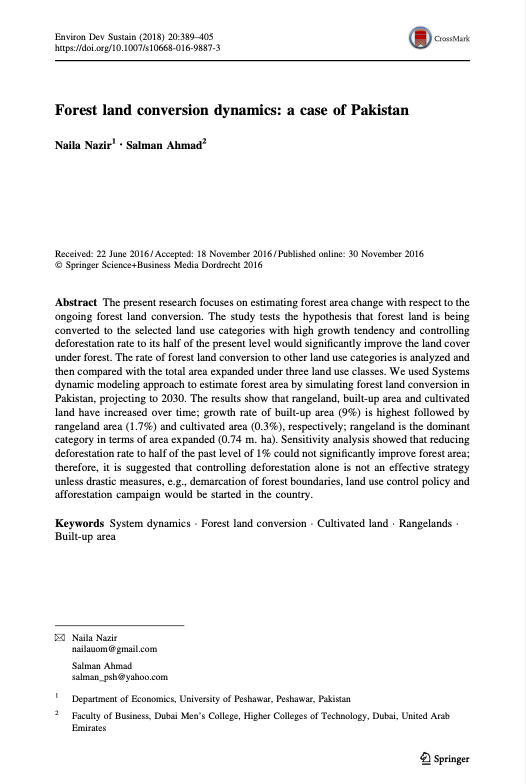Resource information
The present research focuses on estimating forest area change with respect to the ongoing forest land conversion. The study tests the hypothesis that forest land is being converted to the selected land use categories with high growth tendency and controlling deforestation rate to its half of the present level would significantly improve the land cover under forest. The rate of forest land conversion to other land use categories is analyzed and then compared with the total area expanded under three land use classes. We used Systems dynamic modeling approach to estimate forest area by simulating forest land conversion in Pakistan, projecting to 2030. The results show that rangeland, built-up area and cultivated land have increased over time; growth rate of built-up area (9%) is highest followed by rangeland area (1.7%) and cultivated area (0.3%), respectively; rangeland is the dominant category in terms of area expanded (0.74 m. ha). Sensitivity analysis showed that reducing deforestation rate to half of the past level of 1% could not significantly improve forest area; therefore, it is suggested that controlling deforestation alone is not an effective strategy unless drastic measures, e.g., demarcation of forest boundaries, land use control policy and afforestation campaign would be started in the country.

